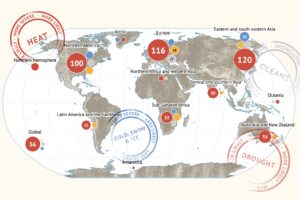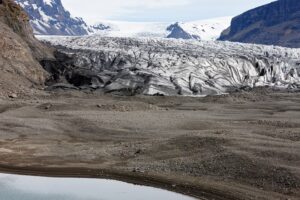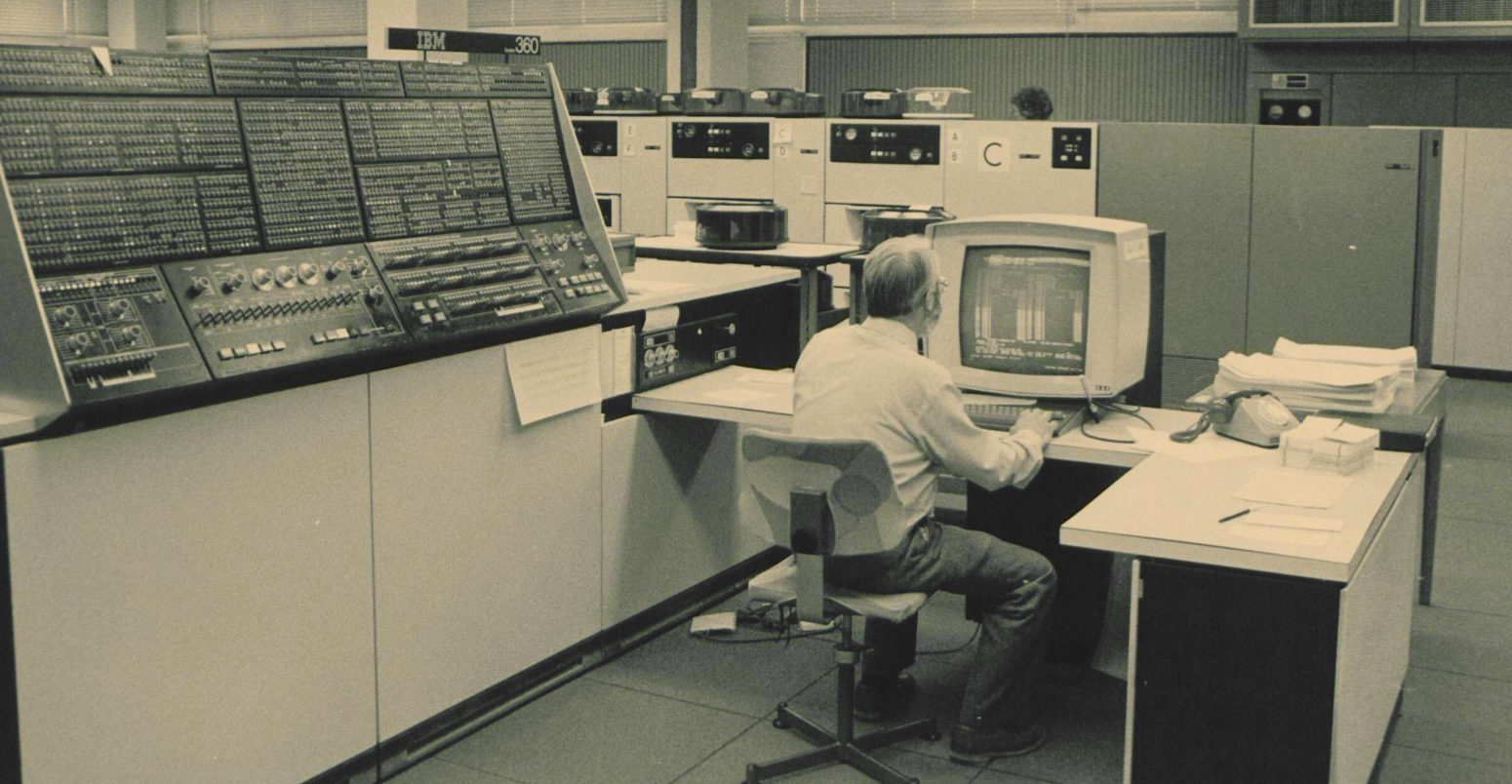
Guest post: The 50th anniversary of a remarkable global-warming prediction

Prof Richard Betts MBE
09.01.22
Prof Richard Betts MBE
01.09.2022 | 4:41pmToday marks the 50th anniversary of a remarkable research paper on global warming.
Written by meteorologist John Sawyer, the paper – entitled “Man-made carbon dioxide and the greenhouse effect” – was published by the journal Nature in 1972.
The paper discussed some of the key concepts involved in human-caused global warming and makes one of the first predictions of future global warming – that temperatures would rise 0.6C by the end of the 20th century.
Sawyer’s calculations turned out to be only a slight overestimate of how the world would warm in the decades after his paper was published.
His paper noted that “in spite of the enormous mass of the atmosphere and the very large energies involved in the weather systems which produce our climate”, the impact of human activity was “approaching a scale at which they cannot be completely ignored as possible contributors to climate and climatic change”.
Pioneer
John S Sawyer FRS (1916-2000) was a meteorologist at the UK’s Met Office, starting as a technical officer working with the Royal Air Force during the second world war and going on to become director of research.
Among his many accolades, he was president of the World Meteorological Organisation’s Commission for Atmospheric Sciences and was elected a fellow of the Royal Society in 1962. He was also a fellow of the Royal Meteorological Society and served as its president from 1963 to 1965.
Sawyer’s paper drew on the work of several pioneers of climate science. He discussed the principles of the global carbon cycle, the role of industrial development as the driver of rising CO2 levels in the atmosphere, and factors affecting the response of global temperature to this rise in CO2.
For example, he noted that “industrial development has recently been proceeding at an increasing rate so that the output of man-made carbon dioxide has been increasing more or less exponentially”.
Sawyer’s paper showed an early version of the now-iconic “Keeling Curve” graph of atmospheric CO2 at Mauna Loa in Hawaii (see below). He pointed out that CO2 was building up in the atmosphere at about half the rate of emissions due to absorption of the other half by global vegetation and the oceans:
“So long as the carbon dioxide output continues to increase exponentially, it is reasonable to assume that about the same proportion as at present (about half) will remain in the atmosphere and about the same amount will go into the other reservoirs.”
He also cited Swedish meteorologist Bert Bolin – who later became the first chair of the Intergovernmental Panel on Climate Change (IPCC) – as estimating a 25% rise in atmospheric CO2 by the end of the 20th century.
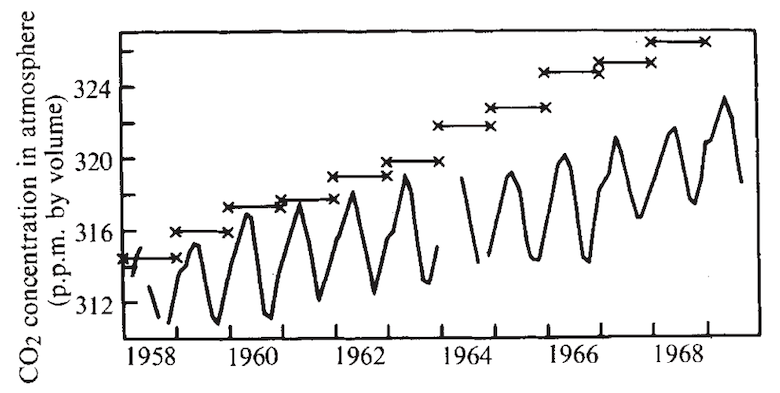
Early prediction
Sawyer’s paper went on to explain some of the key processes through which the CO2 rise warms the climate, including the principle of the greenhouse effect and the role of increased water vapour as a feedback on the warming. He wrote:
“As carbon dioxide is one of the principal gases taking part in radiation exchange in the atmosphere and in the radiation of the Earth’s heat content, a change in the content of carbon dioxide within the atmosphere is likely to influence the process.”
He described the additional CO2 as “tend[ing] to act as a blanket which keeps the Earth warmer”.
Sawyer also cited the work of Syukuro Manabe, a pioneer of climate modelling who was awarded the Nobel prize for physics in 2021.
Manabe had calculated that a doubling of atmospheric CO2 would cause an increase in global temperature of 2.4C. Combining this with Bolin’s suggested 25% rise in CO2 led to Sawyer’s prediction of a 0.6C increase in global temperature by the end of the 20th century. He noted that this would be “an amount somewhat greater than the climatic variations of recent centuries”.
This prediction of warming was particularly notable since it was published following a period of slight decline in global temperatures over the previous two decades. Although the Earth had warmed in the first half of the 20th century – and engineer and amateur scientist Guy Callendar had attributed this to the rising CO2 – by the 1960s, climate scientists were noting that the warming trend had actually reversed .
A high-profile prediction of a return to warming may then have felt like a bold prediction, but of course was entirely correct – the global temperature did start to rise again in the 1970s.
Sawyer did not specify how the 0.6C rise was actually defined – he did not assign a period over which temperatures would be averaged to remove the effects of year-to-year natural variability.
The chart below shows how Sawyer’s prediction (red line) compares to observed temperatures assuming that his prediction applies to the two decades around the year 2000 (yellow line) compared to the 20 years around the date his paper was published (blue line).
By this definition, Sawyer’s predicted warming of 0.6C was an overestimate – but within 25% of the observed warming of 0.48C.
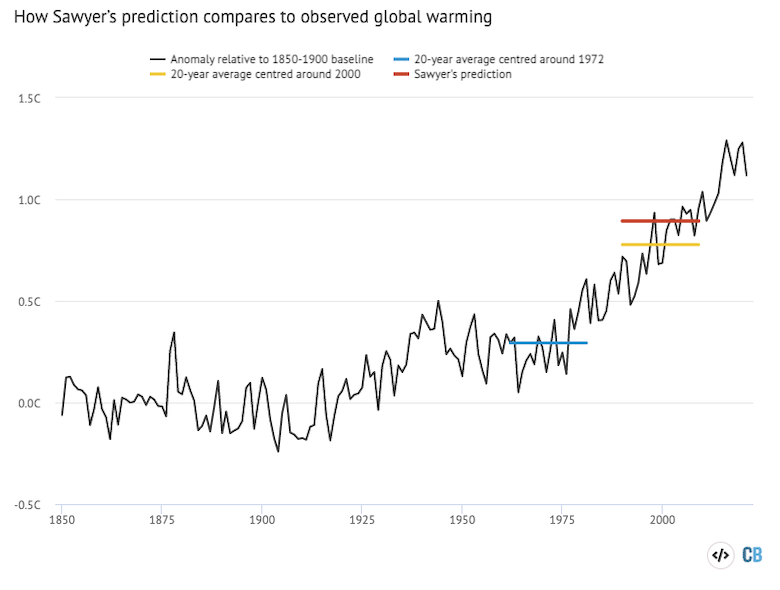
Uncertainties
There were a number of uncertainties and shortcomings with Sawyer’s method and its application, some of which he noted in the paper and others which only became clear later.
For example, Sawyer noted that Manabe’s model at the time had not included the effects of clouds or the loss of snow and ice cover, both of which affect how much warming occurs in response to increased CO2.
Sawyer’s diagram below illustrates the “aspects of the radiation balance of the atmosphere”.
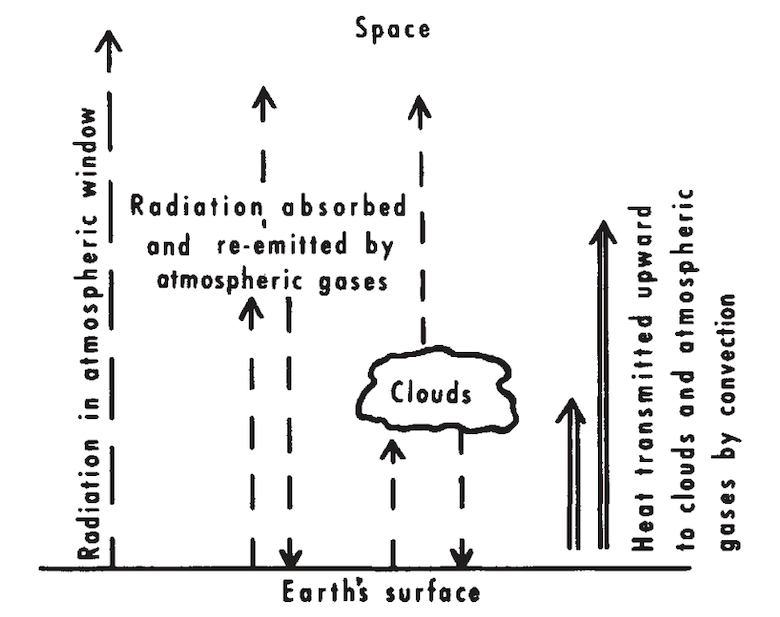
Manabe’s warming estimate of 2.4C represented what is now termed the equilibrium climate sensitivity (ECS), which is the long-term response of global temperature to a doubling of CO2. (Manabe’s estimate is lower than the IPCC’s most recent central estimate of 3C.)
Sawyer also noted that the calculations did not account for lag in warming caused by the long timescale for heat uptake in the oceans – also known as “thermal inertia”. For a prediction of warming over a few decades, what he really needed was not ECS but the transient climate response (TCR). This is the warming at the time of reaching doubled CO2, rather than the long-term response represented by ECS. Consideration of the thermal inertia of the oceans would have led to a smaller prediction of warming.
Bolin’s 25% increase in CO2 turned out to be an overestimate, with CO2 actually only reaching 367 parts per million (ppm) in the year 2000. In his paper, Sawyer cited 319ppm in 1969 as the most recent estimate of CO2 concentrations at Mauna Loa, but modern, recalibrated records give a value of 323ppm for that year. The actual rise in CO2 between the publication of the paper and the end of the 20th century was, therefore, only 14%, which would have led Sawyer to predict a smaller rise in temperature.
In addition, Sawyer did not include the effects of other greenhouse gases (GHGs), such as methane, nitrous oxide, ozone and chlorofluorocarbons (CFCs). Including these would have increased his prediction of warming. On the other hand, he also omitted the effects of aerosol particles from air pollution, which, overall, have a cooling effect by reflecting some solar radiation back to space – including these would have reduced his predicted warming. The overall effect of omitting both non-CO2 GHGs and aerosols was therefore probably minimal.
Sawyer was fully aware that his prediction had large uncertainties, noting in his paper:
“In spite of the enormous complications of attempting to calculate the whole circulation of atmospheric winds and the resulting cloud and rain distributions, it is probable that only in this way can a soundly based estimate of possible man-made climatic changes be made.”
While his published prediction turned out to be an overestimation of the warming seen by the end of the 20th century, a more accurate estimate of the CO2 rise and consideration of the thermal inertia of the oceans would have given a smaller predicted warming, and may even have resulted in an underestimate in his simplistic method.
Complex models
Sawyer’s paper called for more complex calculations to be carried out using “sophisticated models” that represented the full circulation of the atmosphere and the processes of clouds, rainfall and various feedbacks.
He also foresaw the challenges of dealing with processes operating at very small scales, such as individual clouds. For example, he wrote:
“Most difficult is to devise a method of calculating the amount of cloud to be expected in a particular circulation regime because individual clouds are too small to be treated; the statistical behaviour of assemblies of clouds covering a region will have to be calculated, and it is not yet clear how this may be achieved.”
Since then, such models have been developed and are now vast in scale and complexity, but even so are only just beginning to capture some of the key small-scale processes.
In his paper, Sawyer expressed the view that the predicted 0.6C warming was “no cause for alarm”, but he did note the potential economic importance:
“Nevertheless, it must not be overlooked that variations in climate of only a fraction of a degree centigrade have considerable economic importance, as experience of natural fluctuations has already shown. The more frequent incidence of severe winters or of frost can readily affect the economies of sensitive crops.”
However, with ongoing emissions of GHGs having caused further warming since then, and little sign of this abating, few climate scientists would be so casual these days. The IPCC is now extremely clear that urgent action on both emissions reduction and adaptation are needed to maintain “a liveable and sustainable future for all”.
Sawyer died in September 2000, so had lived to see his prediction broadly come true. His paper remains a classic – an early example of a review of contemporary understanding of human impact on the climate through the burning of fossil fuels.
Sawyer, J. S. (1972) Man-made carbon dioxide and the “greenhouse” effect, Nature, doi:10.1038/239023a0. A pdf of the paper can also be found at this link.
-
Guest post: The 50th anniversary of a remarkable global-warming prediction


